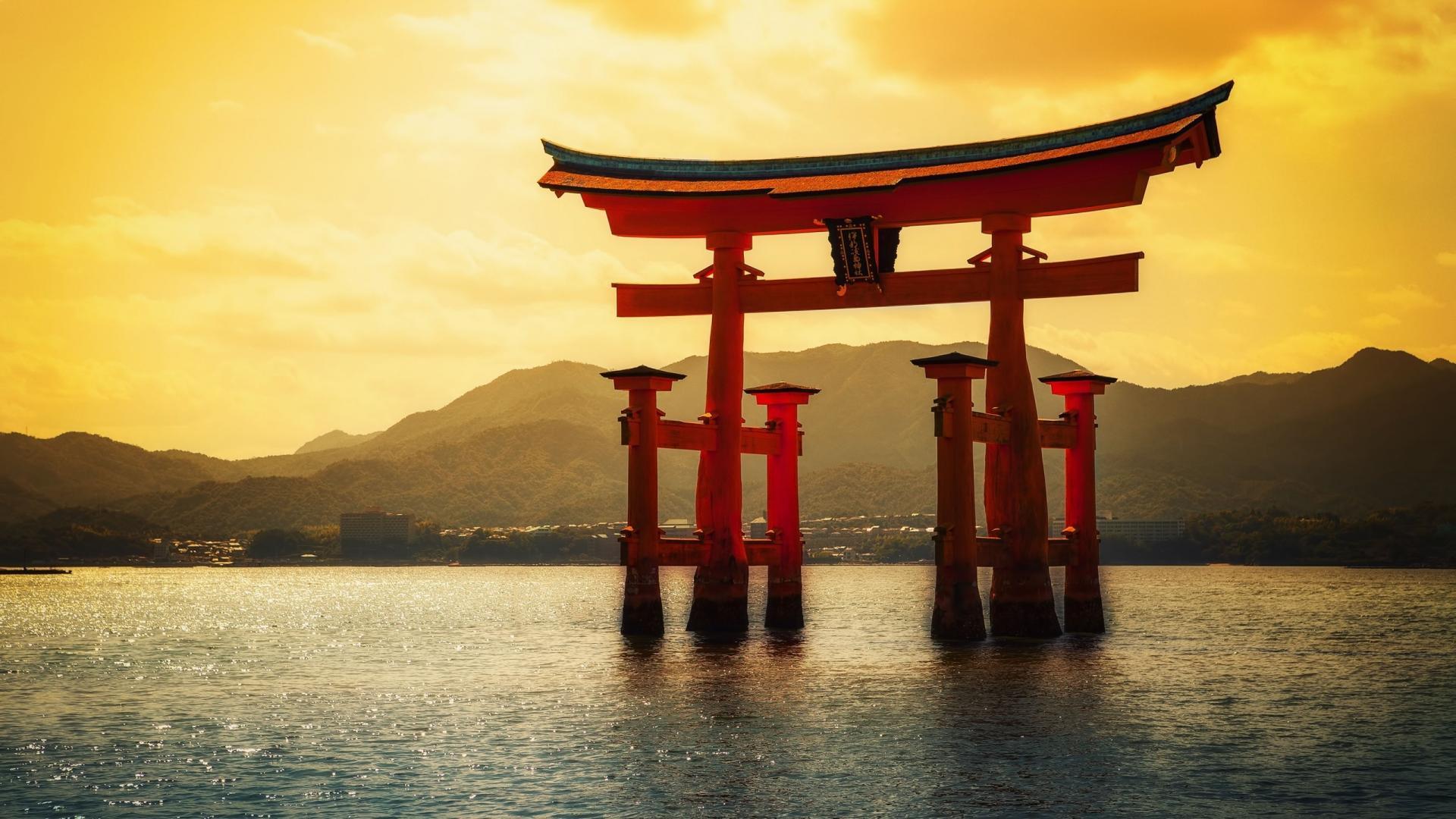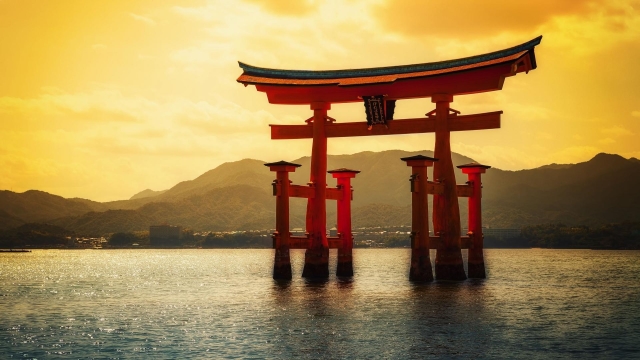
In the heart of Japan, amidst lush greenery and tranquil landscapes, lie the serene Shinto shrines, each a testament to a rich spiritual heritage that has flourished for centuries. These sacred spaces invite visitors to step away from the hustle and bustle of modern life and immerse themselves in a world where nature and spirituality intertwine. As one wanders through the vibrant torii gates and stone pathways, a deep sense of calm washes over, revealing the timeless whispers of the ancients who revered these sites long before us.
Shinto Shrines In Japan
Shinto shrines are not just religious sites; they are reflections of the Japanese philosophy that celebrates the harmony between humanity and nature. Each shrine serves as a home for kami, the spirits believed to inhabit the natural world, and offers a unique window into the traditions and rituals that have shaped Japanese culture. Whether nestled in the mountains, positioned by the sea, or tucked away within bustling cities, these shrines resonate with an aura of peace that beckons exploration and introspection, inviting all to experience the sacredness that permeates their surroundings.
The Essence of Shinto Beliefs
Shinto, the indigenous spirituality of Japan, embodies a profound connection between the natural world and the divine. Central to Shinto beliefs is the concept of kami, which refers to the spirits or gods present in nature, objects, and ancestors. Kami are seen as guardians of specific locations and are revered in various forms, from majestic mountains to gently flowing rivers. This animistic perspective fosters a deep respect for the environment, reflecting the belief that humans exist in harmony with the natural order.
Ritual purity, or misogi, is an essential aspect of Shinto that emphasizes cleansing and purification before approaching the kami. This practice underscores the importance of maintaining a pure heart and spirit when participating in worship or entering sacred spaces. The act of purification often involves simple rituals such as washing hands and rinsing the mouth at a temizuya, a water basin found at the entrance of shrines. These rituals serve as a reminder of the need to be mindful and respectful in all interactions with the divine.
Furthermore, festivals or matsuri are vital to Shinto practice, celebrating the kami and reinforcing community ties. These events often feature vibrant parades, traditional music, and dances aimed at honoring the kami and ensuring their favor. Matsuri not only strengthen communal bonds but also provide opportunities for individuals to reflect on their relationship with the divine and the natural world. Through these observances, followers of Shinto maintain a continuous dialogue with the kami, fostering a sense of belonging and spiritual fulfillment.
Architectural Features of Shinto Shrines
Shinto shrines are renowned for their unique architectural style that harmonizes with the natural environment. Typically characterized by a simple yet elegant design, these structures often incorporate natural materials such as wood and stone, reflecting the Shinto belief in the sacredness of nature. The roofs are usually thatched or made of bark, creating a seamless blend with the surrounding greenery. This connection to nature is not merely aesthetic; it signifies the reverence Shinto practices hold for the deities, or kami, that inhabit the natural world.
One of the most distinctive features of Shinto shrines is the torii gate. This iconic structure serves as a symbolic entrance, marking the transition from the mundane to the sacred. Usually painted bright vermilion or left in natural hues, the torii creates a visual and spiritual threshold. As visitors pass through, they are reminded of the spiritual journey they are undertaking. The placement of the torii often aligns with the shrine’s overall layout, emphasizing the importance of spatial arrangement in Shinto architecture.
Another notable aspect of Shinto shrine design is the honden, or main hall, which houses the deity. The honden is elevated above the ground and typically features a thatched roof supported by wooden pillars, symbolizing the connection between heaven and earth. Each shrine has its unique architectural variations, influenced by regional styles and historical periods. The serene simplicity of these shrines invites contemplation and reflection, allowing visitors to immerse themselves in the tranquil atmosphere that defines Shinto beliefs.
Rituals and Practices at Shrines
Shinto shrines serve as sacred spaces where various rituals and practices occur, deeply rooted in Japanese culture and spirituality. Visitors often begin their journey with a cleansing ritual at the temizuya, a purification fountain. They wash their hands and rinse their mouths, symbolizing the removal of impurities before approaching the sacred space. This act sets a tone of respect and mindfulness, preparing individuals for their spiritual experience.
At the heart of the shrine experience are the ceremonies conducted throughout the year, celebrating seasonal changes, significant events, and community milestones. One of the most prominent rituals is the Matsuri, a festival honoring the kami, or spirits, residing within the shrine. These festivals often feature traditional dance, music, and offerings, creating a vibrant atmosphere that attracts both locals and tourists. It is a time of joy and connection, fostering communal bonds and reverence for nature and the divine.
Another integral practice is the offering of ema, wooden plaques on which visitors write their wishes or prayers. These plaques are hung at the shrine, where they are believed to carry one’s hopes to the kami. Additionally, visitors might participate in the practice of shinto prayers, or norito, recited by priests during rituals. This blend of personal devotion and communal celebration encapsulates the essence of Shinto, inviting individuals to engage with the divine while fostering a deep connection to the natural world.
The Role of Nature in Shinto
Nature is at the heart of Shinto beliefs, embodying the principle that the divine resides within the natural world. In Shinto shrines, the surroundings are often designed to reflect harmony with the environment, showcasing the beauty of trees, water, and stones. Each element of nature is revered, and rituals often celebrate the changing seasons, emphasizing the cyclical nature of life and the interconnectedness of all living things.
The relationship between Shinto shrines and nature is also reflected in the architectural styles, which blend seamlessly with their surroundings. Many shrines are situated in serene settings, surrounded by forests or near rivers, fostering a sense of tranquility and encouraging visitors to connect with the divine. This immersion in nature invites reflection and meditation, allowing practitioners to experience a sense of peace and spiritual renewal.
Furthermore, the importance of rituals that honor nature showcases how integral the environment is to Shinto practices. Festivals and ceremonies are held to express gratitude for the blessings provided by the natural world, such as bountiful harvests or protection from disasters. This profound reverence for nature reinforces the idea that harmony between humanity and the environment is essential, reflecting a core tenet of Shinto philosophy.


